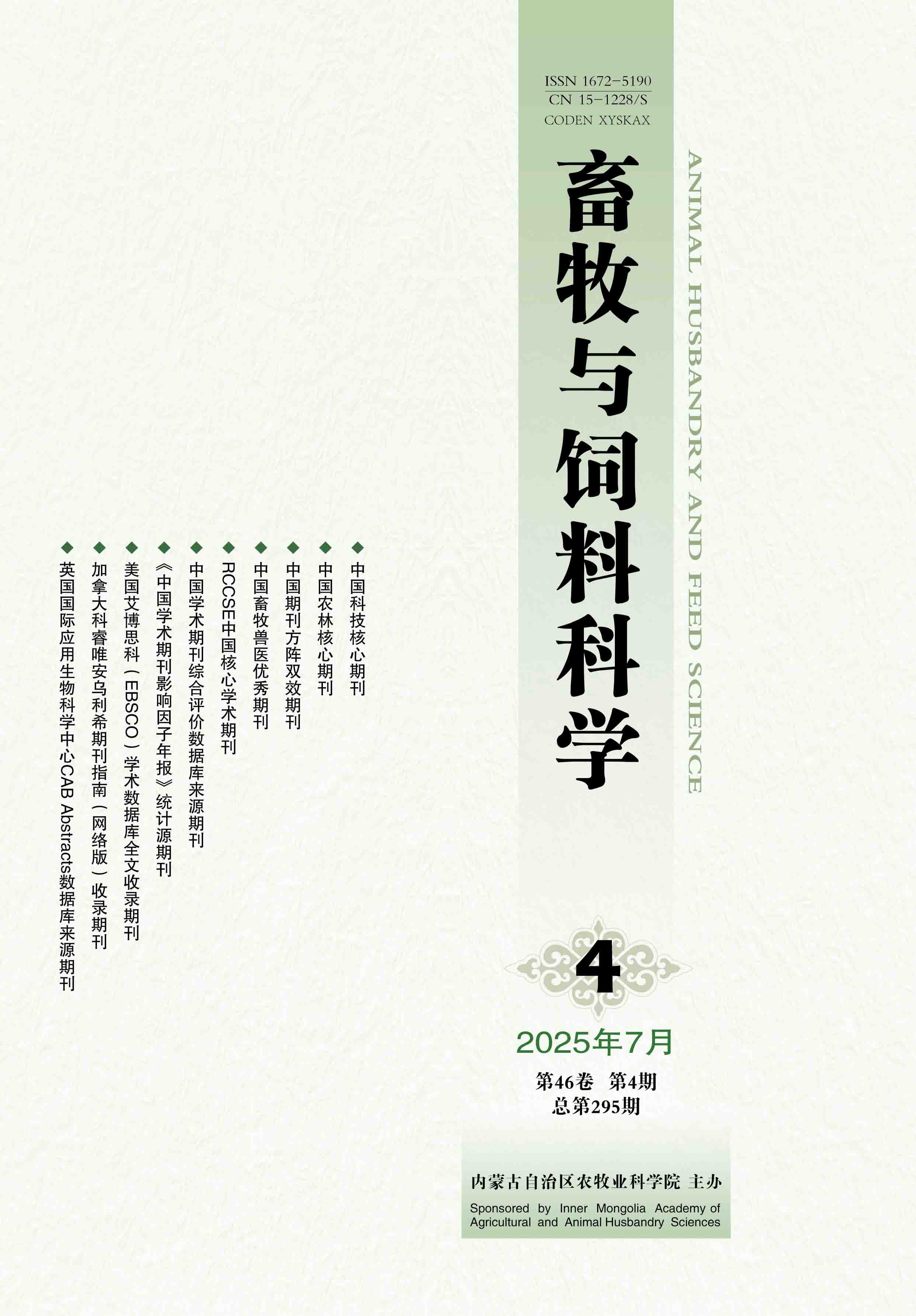Select
Effects of Different Mixed Sowing Combinations on Soil Physical and Chemical Properties and Vegetation Community of Saline-alkali Grassland in Songnen Plain
YU Sen, XIN Dandan, SU Yinuo, SUN Xue, WANG He, ZOU Yan
2024, 45(3):
50-57.
doi:10.12160/j.issn.1672-5190.2024.03.007
Abstract
(
985 )
PDF (756KB)
(
121
)
Save
References |
Related Articles |
Metrics
[Objective] This study aimed to screen the suitable mixed sowing combinations of forage grasses for saline-alkali grassland reseeding in Songnen Plain. [Method] The experiment was conducted on the saline-alkali grassland in Qiqihar City, Heilongjiang Province. Hordeum brevisubulatum , a variety of saline-alkali tolerant forage grass widely distributed in Songnen Plain, was used as the dominant forage grass for reseeding. The mixed sowing treatments were set with 4 indigenous varieties of saline-alkali tolerant forage grasses in Songnen Plain, including Puccinellia tenuiflora , Elymus dahuricus , Leymus chinensis and Calamagrostis epigejos . A single sowing treatment with Hordeum brevisubulatum was set as well. In the 4 mixed sowing treatments, the sowing amount of Hordeum brevisubulatum was 30 kg/hm2 , and that of the other forage grasses was all 15 kg/hm2 . In the single sowing treatment of Hordeum brevisubulatum , the sowing amount of Hordeum brevisubulatum was 45 kg/hm2 . Each of the above treatment had 3 reduplicates with 1 plot for each reduplicate. A plot without reseeding (CK) was included. Accordingly, a total of 16 plots were included in this study, and each plot covered an area of around 0.4 hm2 . Under the condition of minimizing disturbance to the native vegetation, no-tillage reseeding was performed on the experimental plots in 2021. Starting from the second year of reseeding, the soil physical and chemical properties such as bulk density, pH value, salt content (conductivity), organic matter content, alkali-hydrolyzable nitrogen content, available phosphorus content and available potassium content, as well as the important value of vegetation community of the experimental plots were determined for two consecutive years. [Result] In the second year (2022) of reseeding, compared with CK, the soil bulk density, pH value and conductivity of the mixed sowing treatments and the single sowing treatment decreased to varying degrees, while the soil contents of organic matter, alkali-hydrolyzable nitrogen, available phosphorus and available potassium increased to varying degrees. Compared with the second year of reseeding, the mixed sowing treatments and the single sowing treatment had decreased soil bulk density, pH value and conductivity as well as elevated soil contents of organic matter, alkali-hydrolyzable nitrogen, available phosphorus and available potassium in the third year (2023) of reseeding. The effectively improved soil physical and chemical properties were observed in the mixed sowing treatments and the single sowing treatment in the third year of reseeding. Specifically, the soil bulk density, pH value and conductivity were significantly (P <0.05) lower than those of CK, the soil contents of alkali-hydrolyzable nitrogen, available phosphorus and available potassium were significantly (P <0.05) higher than those of CK, and the soil organic matter content was significantly (P <0.05) higher than CK except for the mixed sowing treatment of Hordeum brevisubulatum +Leymus chinensis . In addition, the lowest soil bulk density, pH value and conductivity were observed in the mixed sowing treatment of Hordeum brevisubulatum +Leymus chinensis , while the highest soil contents of organic matter, alkali-hydrolyzable nitrogen, available phosphorus and available potassium were found in the mixed sowing treatment of Hordeum brevisubulatum +Elymus dahuricus . Compared with CK, there were minor differences in the important values of Poaceae plants and other forbs among the varied mixed sowing treatments and the single sowing treatment in the second year of reseeding, with the highest observed in the mixed sowing treatment of Hordeum brevisubulatum +Elymus dahuricus at 0.60. Compared with the second year of reseeding, the important values of Poaceae plants in various mixed sowing treatments and the single sowing treatment elevated in the third year of reseeding, and they were all higher than those in CK. Furthermore, the highest important value was also observed in the mixed sowing treatment of Hordeum brevisubulatum +Elymus dahuricus at 0.71. [Conclusion] The mixed sowing of Hordeum brevisubulatum +Leymus chinensis had the best performance in ameliorating the soil bulk density, pH value and salt content, and was a preferable mixed sowing combination for improving the severely saline-alkali grasslands. The mixed sowing of Hordeum brevisubulatum +Elymus dahuricus exhibited the best effects on ameliorating the soil contents of organic matter, alkali-hydrolyzable nitrogen, available phosphorus and available potassium as well as vegetation community, and was a superior mixed sowing combination for improving the mild and moderate saline-alkali grasslands as well as the degraded grasslands.








